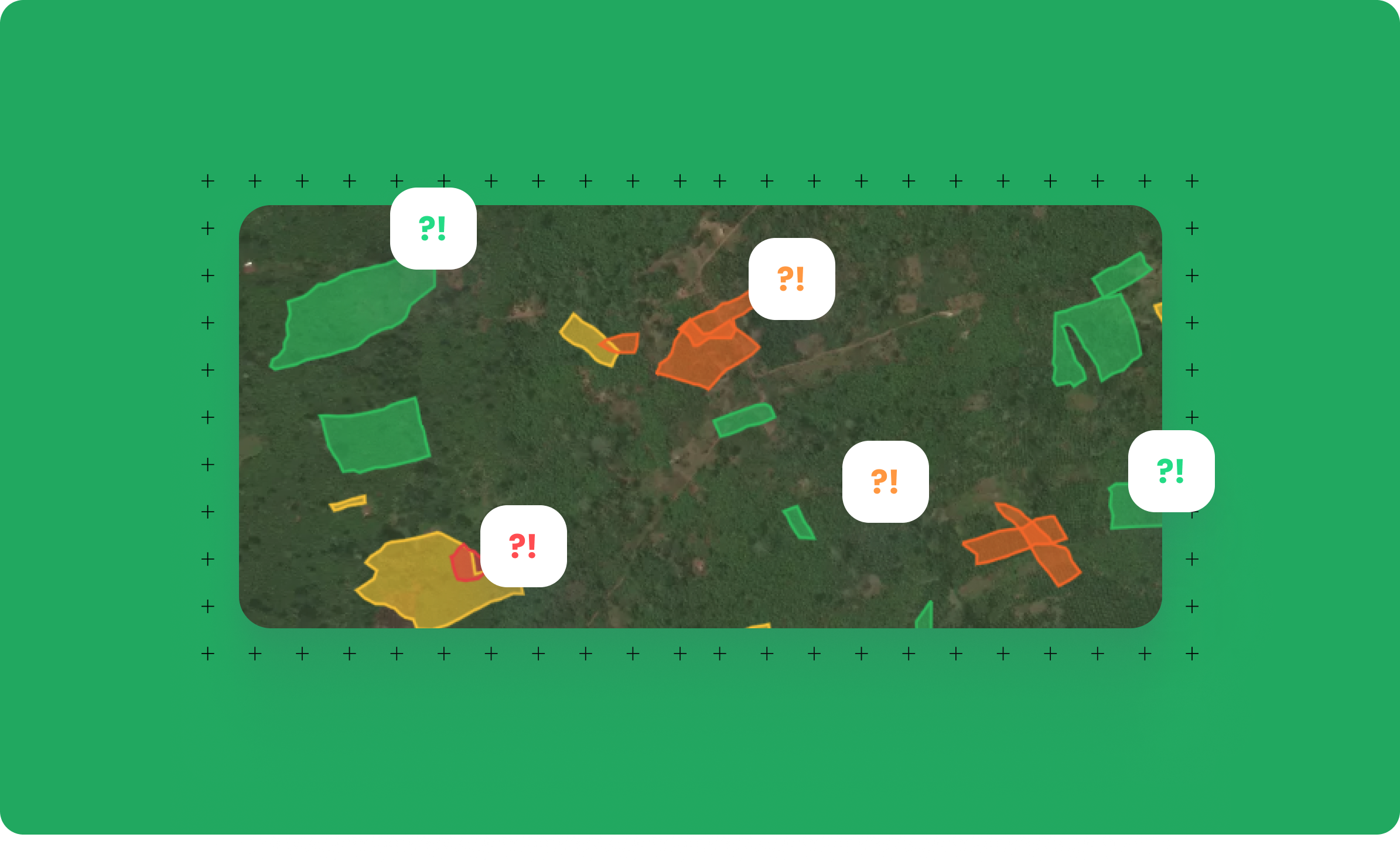Under the European Union Deforestation Regulation (EUDR), any commodity or product entering or leaving the EU market must be deforestation-free. Additionally, it must comply with all local laws in its country of origin.
Operators must trace their supply chains and prove their commodities don’t originate from recently deforested land. The goal is to protect biodiversity, reduce greenhouse gas emissions, and support the livelihoods of smallholder farmers in soy-producing countries.
Soy is one of the key commodities under the EUDR. A significant share of the global production is used for animal feed for livestock.
This guide provides an overview to help stakeholders understand the expectations of the EUDR, including soy-specific insights and practical steps to ensure compliance.
1. EUDR requirements
Soy must come from land that has been free of deforestation since 31 December 2020.
Under the EUDR, every batch of soy must be traceable to its exact crop location, either through coordinates or mapped polygons, to show that no deforestation has happened since the cut-off date. This requirement applies regardless of the operation's scale.
Companies are referred to as “operators” or “traders,” depending on their specific role. An operator is a company that first places the product on the EU market (importers or first domestic sellers). A trader is a company that sells products after initial placement. Both must perform due diligence and submit a due diligence statement to the EU’s information system before taking their respective actions.
2. Which soy falls under the EUDR
Soy ends up in many products in the EU. Companies must ensure EUDR compliance for:
- Soy beans, whether or not broken
- Soybean flour and meal
- Soybean oil and its fractions, whether or not refined, but not chemically modified
- Oilcake and other solid residues, whether or not ground or in the form of pellets, resulting from the extraction of soybean oil
Each product must trace back to the farm plot level.
3. Key challenges in EUDR soy compliance
Data quality
Data quality issues persist, as accurately mapping farms and defining their exact geolocation remains a challenge in remote regions where digital infrastructure is limited. Errors in farm mapping, such as incorrect coordinates or overlapping boundaries, can result in the rejection of due diligence statements. In some areas, it is also challenging to verify land use due to inconsistent record-keeping practices.
Supply chain complexity
Soy rarely stays in neat, separate piles. Grain from scores of farms is tipped into shared silos, hauled by many truckers, blended in crushing plants and stored together at ports. One non-compliant load can contaminate an entire silo, which is why the EUDR instructs exporters to segregate compliant from non-compliant soy and record the origin of every load.
Once the grain is mixed, farm-level details vanish, replaced by a generic batch code, leaving importers without the “place of production” data the rules demand. The fix involves separate bays, a first-in, first-out scheduling system, and thorough clean-downs. These steps add cost, but the dry run proves they pay for themselves. Real-time flow data and digital batch passports ensure compliance with soy integrity without slowing the system.
4. Step-by-step approach to EUDR-readiness
Step 1: Map your supply chain
Identify every supplier in your network, from cooperatives to individual smallholders and large-scale producers. Collect precise geolocation data: use point coordinates for smaller plots and polygon boundaries for larger farms. This will allow you to track the exact origin of your soy.
Step 2: Implement a due diligence system
Gather essential evidence, such as farm boundaries, deforestation monitoring data, and proof of compliance with local laws.
Voluntary certifications, such as RTRS or Fairtrade, can complement your due diligence efforts. However, it cannot replace the mandatory checks under the EUDR.
Step 3: Conduct risk assessment
The EUDR mandates operators to verify and analyse collected information.
This involves assessing various factors, including country risk levels, proximity to forests, the presence of Indigenous peoples, the prevalence of deforestation, and the complexity of the supply chain.
As the law shifts the burden of proof to the defendant, you should collect and provide accurate data that proves compliance.
Step 4: Mitigate risks
If your risk assessment identifies soy linked to recent deforestation, land tenure uncertainties, or other significant compliance concerns, work directly with suppliers to address these issues. This can include providing additional information, commissioning independent surveys or audits, offering training, or investing in capacity building to help producers meet requirements.
By actively supporting supplier improvements, especially smallholders, you can reduce risks while maintaining supply chain inclusion and long-term business relationships.
Step 5: Submit due diligence statements
Once you’ve reduced risk to "negligible", you can submit a due diligence statement. This should include soy details, geolocation data, and a formal declaration of compliance. Upload this information to the EU’s official information system. You’ll receive a unique reference number for use in customs declarations.
Step 6: Maintain ongoing monitoring
EUDR compliance requires continuous monitoring. Implement satellite monitoring, field audits, and regular updates from suppliers. Encourage farmers to adopt better practices, such as boundary mapping and enhanced traceability systems.
5. Soy-specific strategies and best practices
Engage suppliers early
To comply with the EUDR, companies must gather precise geolocation data from their suppliers. Many producers face significant technical and financial barriers to providing this required information. Proactive engagement with suppliers is essential to collect the necessary due diligence data early, preventing compliance failures and shipment delays.
Centralised data platforms can store verified supplier polygons, allowing this proof of compliance to be shared efficiently among multiple buyers and streamlining the due diligence process.
Leverage local expertise
In soy-producing regions, particularly in South America, local legal consultancy and field-based verification are invaluable.
Local laws regarding land use and Indigenous rights can vary significantly from one country to another and from one region to another. Having region-specific expertise is essential.
6. How Verify can support your soy EUDR compliance
EUDR compliance stands or falls with accurate data. With Meridia Verify, you can verify field data quality and assess compliance in real-time.
Identify farm data that poses a critical, high, or medium risk of noncompliance and proactively manage these compliance risks. A detailed final report includes risk matrices, mitigation strategies, and recommendations.
Verify’s EUDR methodology goes beyond deforestation tests and data quality checks. It also verifies whether sourcing from protected areas and IPLC territories is legal and flags potential human rights risks in your supply chain.


